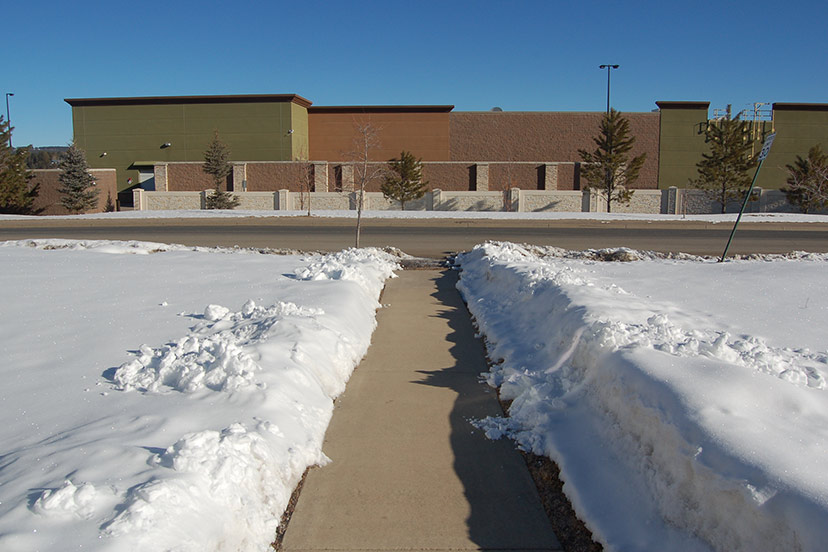“There are alternative ways to grow a town. By making use of existing infrastructure and by encouraging denser and more sensible development — more families per square mile — our community could actually grow its wealth, rather than going further into debt.”
That’s how I concluded Part Ten of this editorial series, after briefly summarizing the ‘Smart Growth America’ reports that were provided to the Pagosa Springs Town government in 2017. Those reports urged the Town to focus its future growth in areas that already have streets and utilities — or else, risk creating a enormous debt burden over the next two decades.
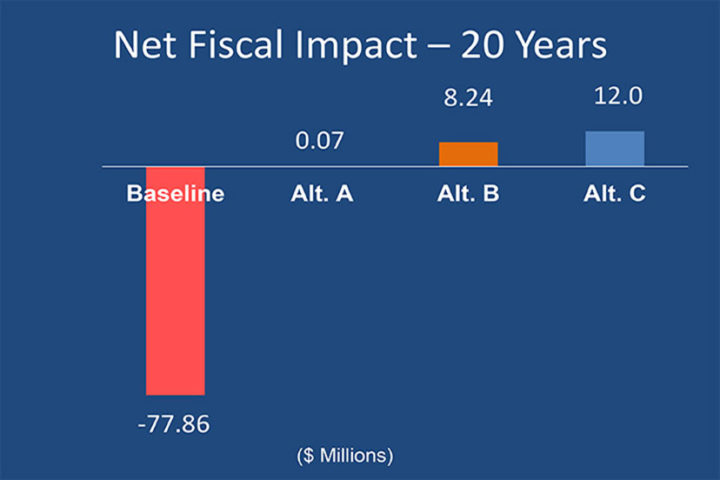
Something else happened at Town Hall, in 2017.
The Town of Pagosa Springs had put considerable effort into their public website, in terms of making their operations and decision-making processes more transparent. While researching the ‘Town to Lakes Trail’ project for a Daily Post article, I was pleasantly surprised to find that the Planning Department had posted, to its page, a Rezoning Application for Aspen Village Ventures LLC.
The Town staff had sent out notices of the upcoming public hearing to all property owners within 300 feet of the requested rezoning, as required by the Land Use and Development Code.
The application was 39 pages long. 27 of those pages consisted of an Operating Agreement for Aspen Village Ventures LLC, a company registered with a Bentonville, Arkansas mailing address. The requested rezoning would allow the company to build up to 55 dwellings on about 3 acres of land immediately south of the Walmart store in Aspen Village. The existing zoning limits the “Enclave” development to about 48 dwellings. Ten units were constructed and sold — apparently, at a discount prices — during the Great Recession. The remaining 38 units were never built.
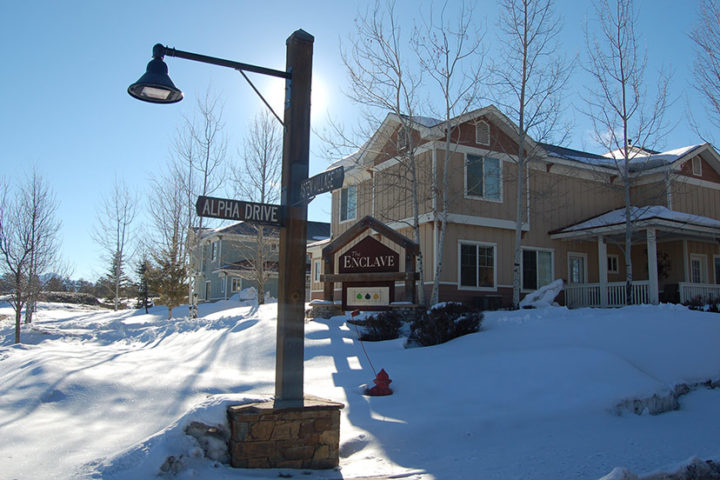
The new proposed plan illustrated slightly smaller units… and slightly more of them: 55 proposed units, instead of 38.
From the Aspen Village Ventures application:
By the time the first ten units were complete, the Great Recession of 2007 had begun, hence, of the original ten townhomes, only one home sold at its initial offering. In an effort to recoup some of the original investment into the Enclave, between 2009 to 2010, the remaining nine townhomes were sold at significant discounts to the original offering prices. An overabundant supply of homes built prior to the recession resulted in a lowering of home prices throughout the Pagosa Springs market for years after. Combined with reduced demand for new housing, no new townhomes have been constructed on the property beyond the original ten.
Beginning in September of 2016, based on anecdotal evidence that a housing shortage now exists in Pagosa Springs, the applicant began to investigate the feasibility of constructing new townhomes on the property with the intent of offering them for sale, or as rentals. The applicant’s research does seem to indicate that there is demand for both new homes for sale, as well as for rental units. Due to the relative small size of Pagosa’s market however, the challenge is to quantify the existing supply and demand for new homes so as to not overbuild the market as was done in the past.
Some of the neighbors, who lived in the existing Enclave townhomes, were concerned that smaller, possibly more affordable dwellings in their neighborhood will make life less pleasant — especially considering, perhaps, that they already watched (in horror?) as a 93,000-square-foot discount store got built across the street. The Walmart store had been actively pursued by the Town government starting in about 2010.
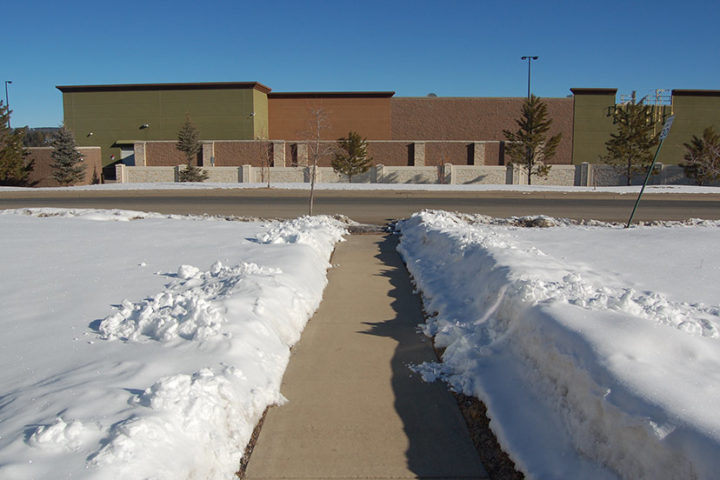
The rezoning application page I found most interesting included the list of property owners located within 300 feet of the proposed rezoning.
The Aspen Village subdivision is one of the few mixed-use commercial/residential areas outside Pagosa’s historical downtown to be annexed into the Town over the past 30 years. This means a couple of things for the residents and businesses within the subdivision. The residents can vote in Town elections and can serve on the Town Council. Properties must abide by the Town’s Land Use and Development Code, rather than the County’s Land Use Code.
And, curiously enough, our local U.S. Post Office will not deliver mail to your home or business, if you live within the Town boundaries. You must maintain a PO Box.
Looking at the list of 45 property owners who had been sent notices of the rezoning hearing. 26 of them, including the Walmart store, have Bentonville, Arkansas addresses. 11 have addresses outside of Colorado. That makes 37. Three have PO Box addresses in Pagosa Springs. The other five Pagosa addresses are located outside of the Aspen Village subdivision.
This might indicate that, out of the 45 property owners who were sent notices about the rezoning hearing, it appeared that only three families lived full-time in homes located within the Aspen Village subdivision.
I wondered if that breakdown reflected the housing conditions in Pagosa Springs, in a more general way. A report published by Region 9 Economic Development District had estimated that about 41 percent of the homes in Archuleta County are owned by people with non-Pagosa addresses. This compares with another recent estimate that 60 percent of the privately-owned parcels — including vacant land — are owned by people with non-Pagosa addresses.
Despite the number of vacant homes and properties in Archuleta County, a “housing shortage” did, in fact, exist in Pagosa Springs, as claimed by the rezoning applicants. The developer’s other claim, that “… an overabundant supply of homes built prior to the recession resulted in a lowering of home prices throughout the Pagosa Springs market for years after,” is less likely to be true. My own research suggests that lower housing prices were the result of a relatively massive number of foreclosures between 2009 and 2012, not by an oversupply of homes.
What began to appear during the Great Recession was not an overabundant supply of homes, but an under-abundant supply of workers, as they left the community seeking jobs elsewhere.
The 2017 rezoning request, if approved, would increase the density within the “Enclave multifamily project” from 12 units per acre to 22 units per acre. The new homes would have views of the east range of the San Juans, and the backside of the Walmart store.
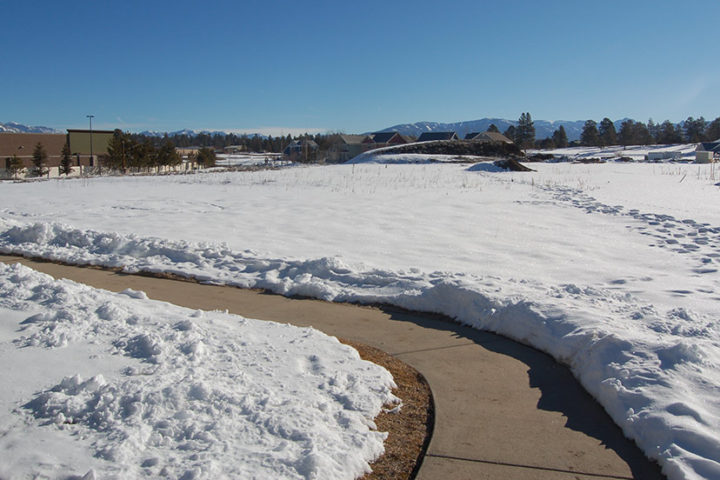
Although the rezoning application used the term “multifamily project” — which could be taken to imply “multifamily housing” — the Town Planning Commission recommended to Town Council that Aspen Village Ventures LLC be prohibited from constructing apartments within the Enclave project.
Prohibited.
I repeat that fact, because I find it quite remarkable. Pagosa was already deep in a housing crisis in 2017, and the type of housing in the shortest supply was (and still is) multifamily rental units. The typical way for communities to provide this type of housing is to allow the construction of apartments in neighborhoods that already have amenities: paved streets, sidewalks, utilities, public transportation, parks, access to groceries and shopping, and so on.
But in March, 2017, the Town Planning Commission recommended to Town Council that Aspen Village Ventures LLC be prohibited from constructing apartments within the Enclave project.

